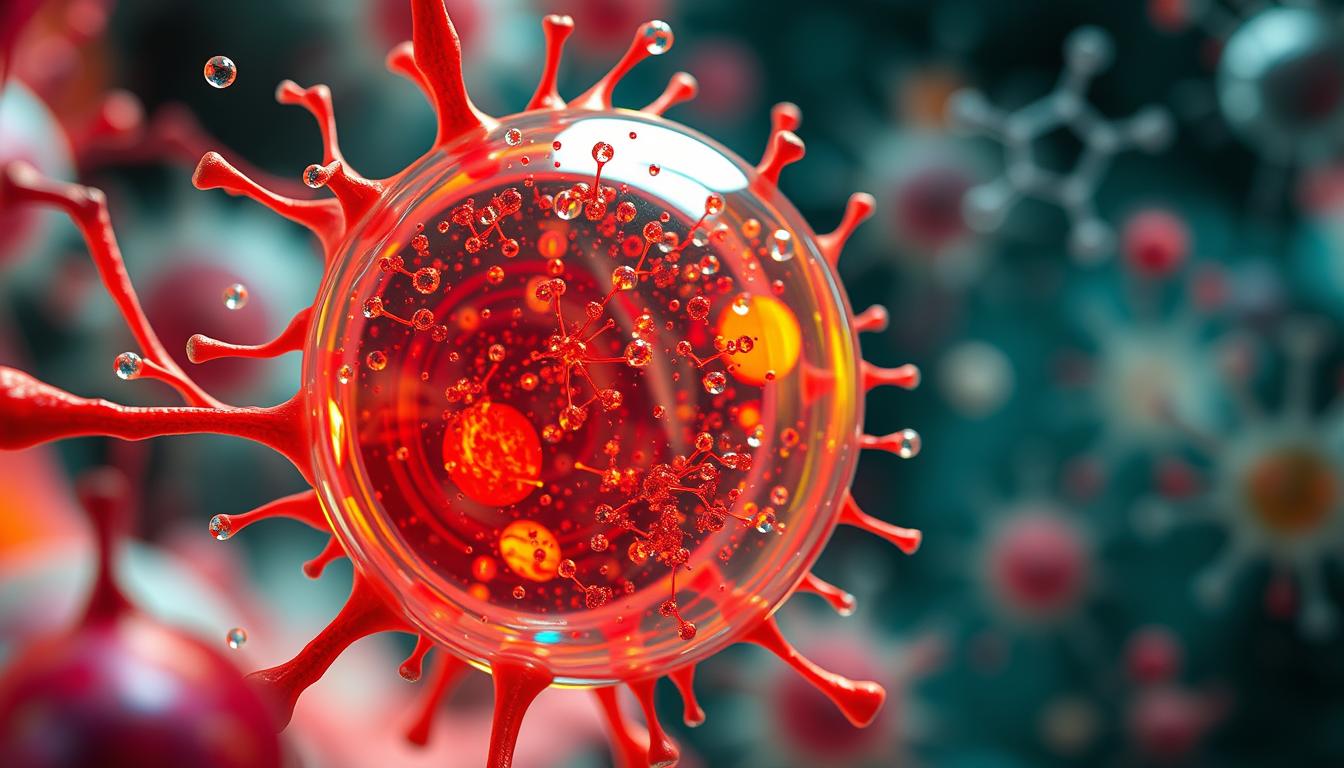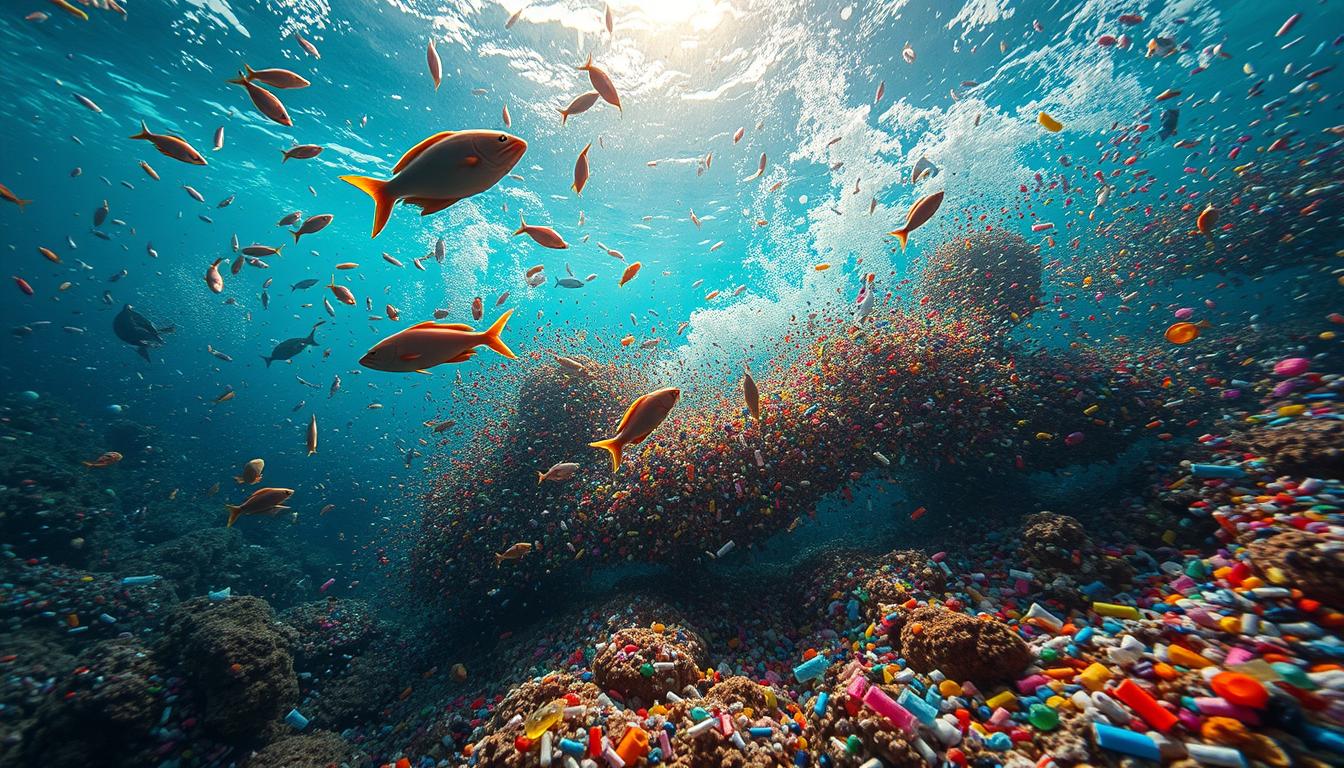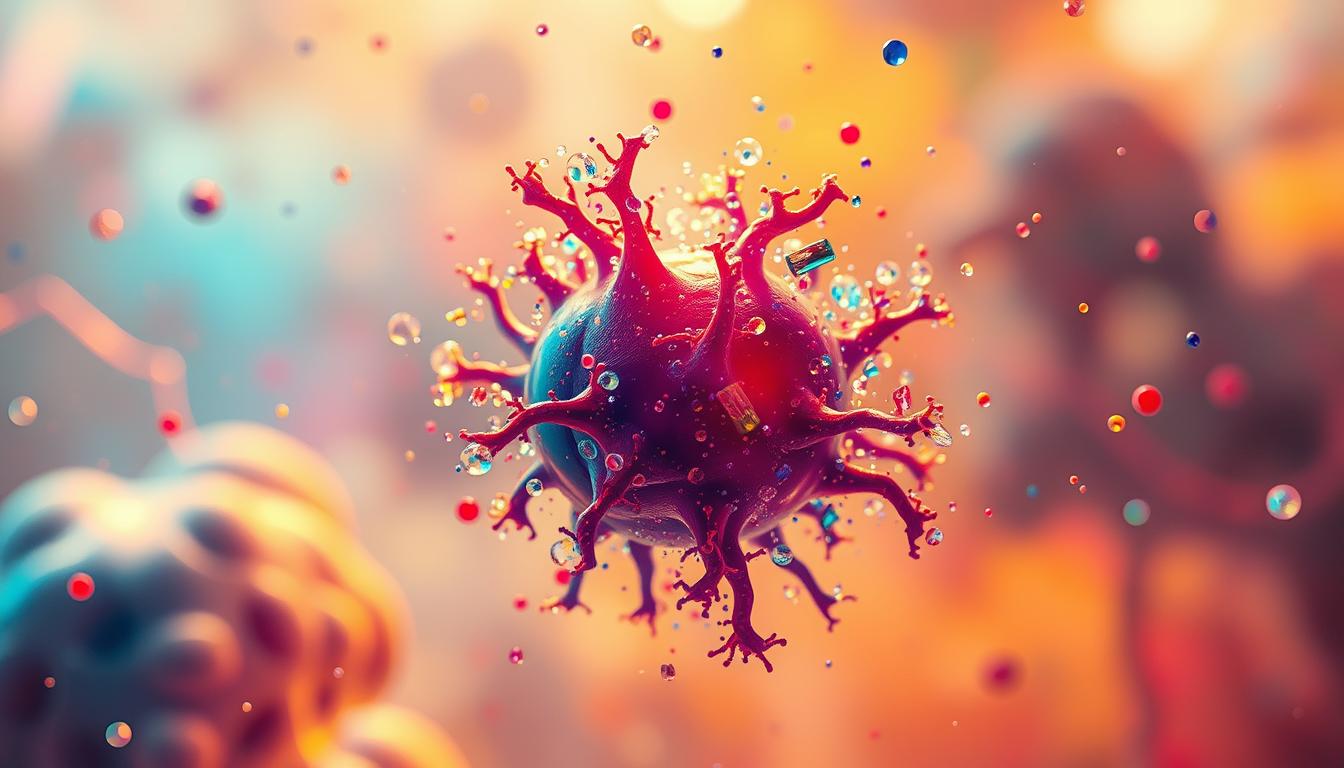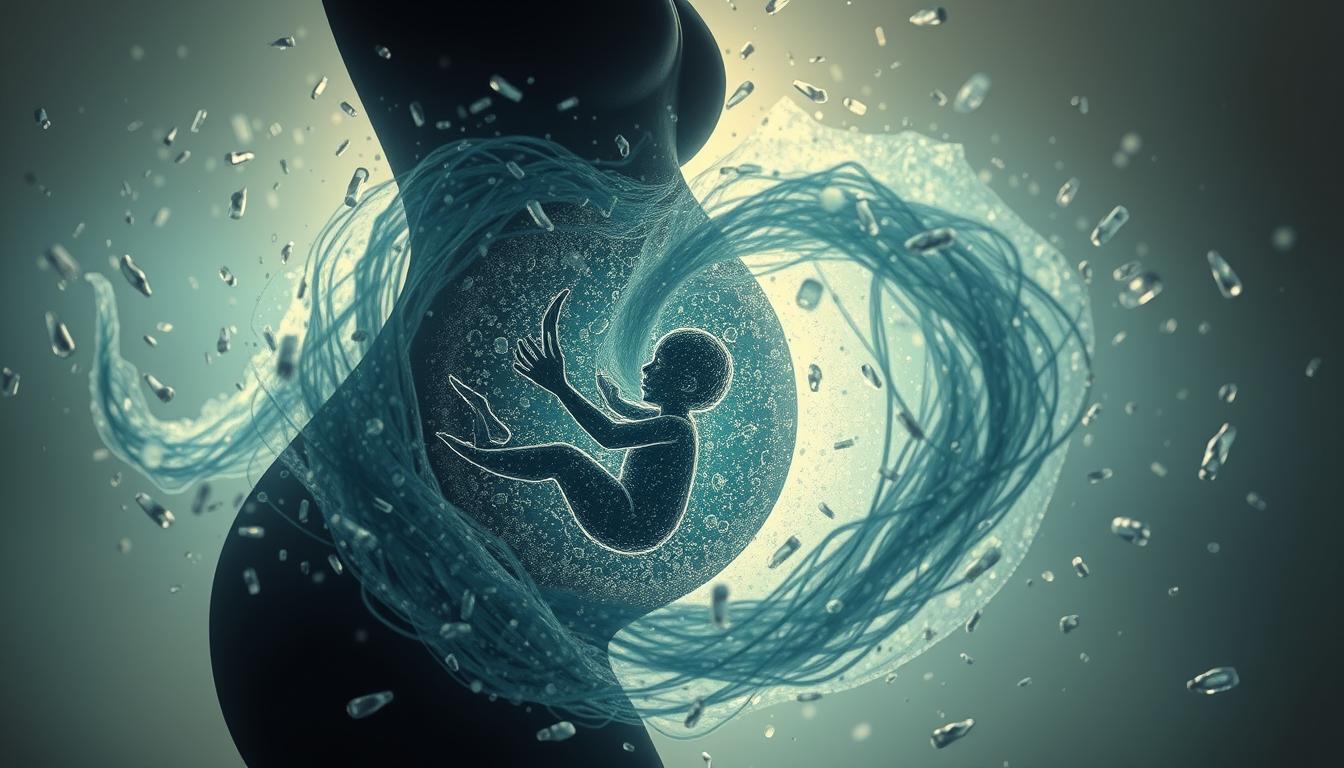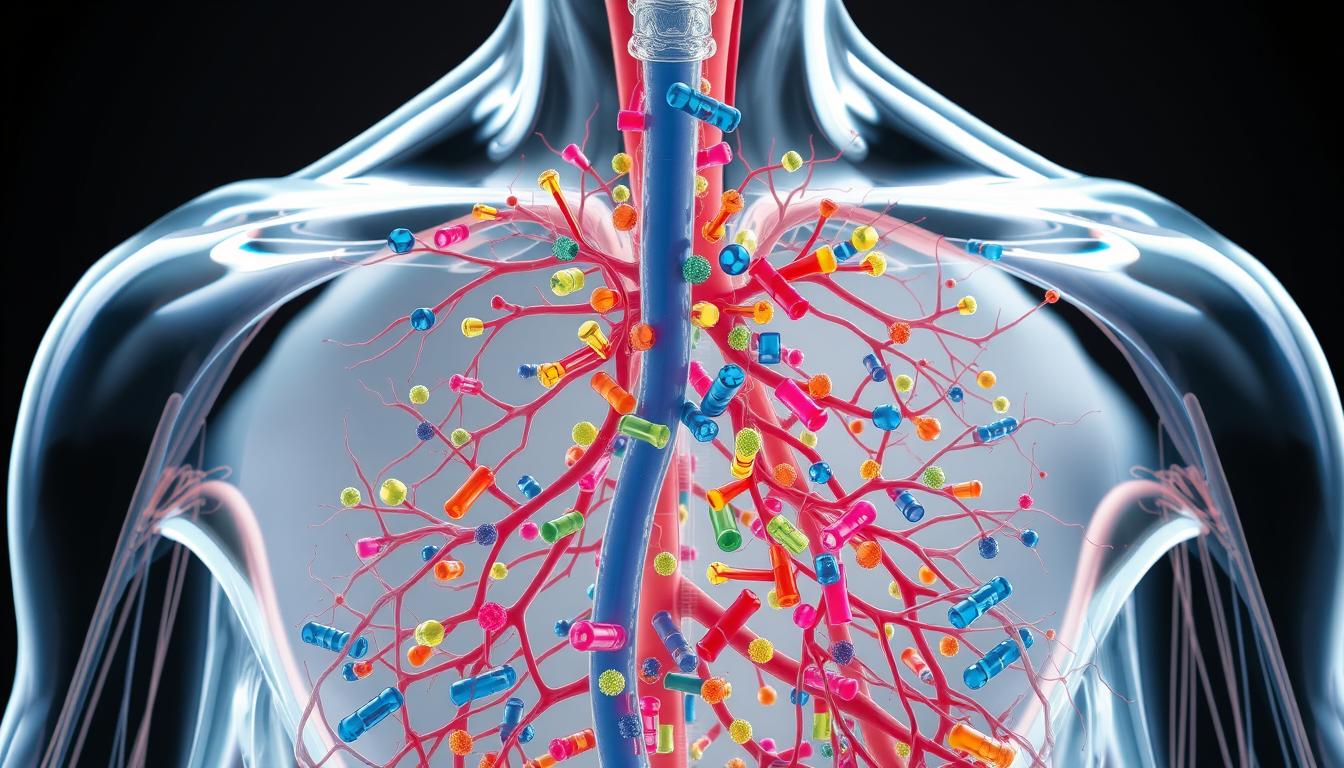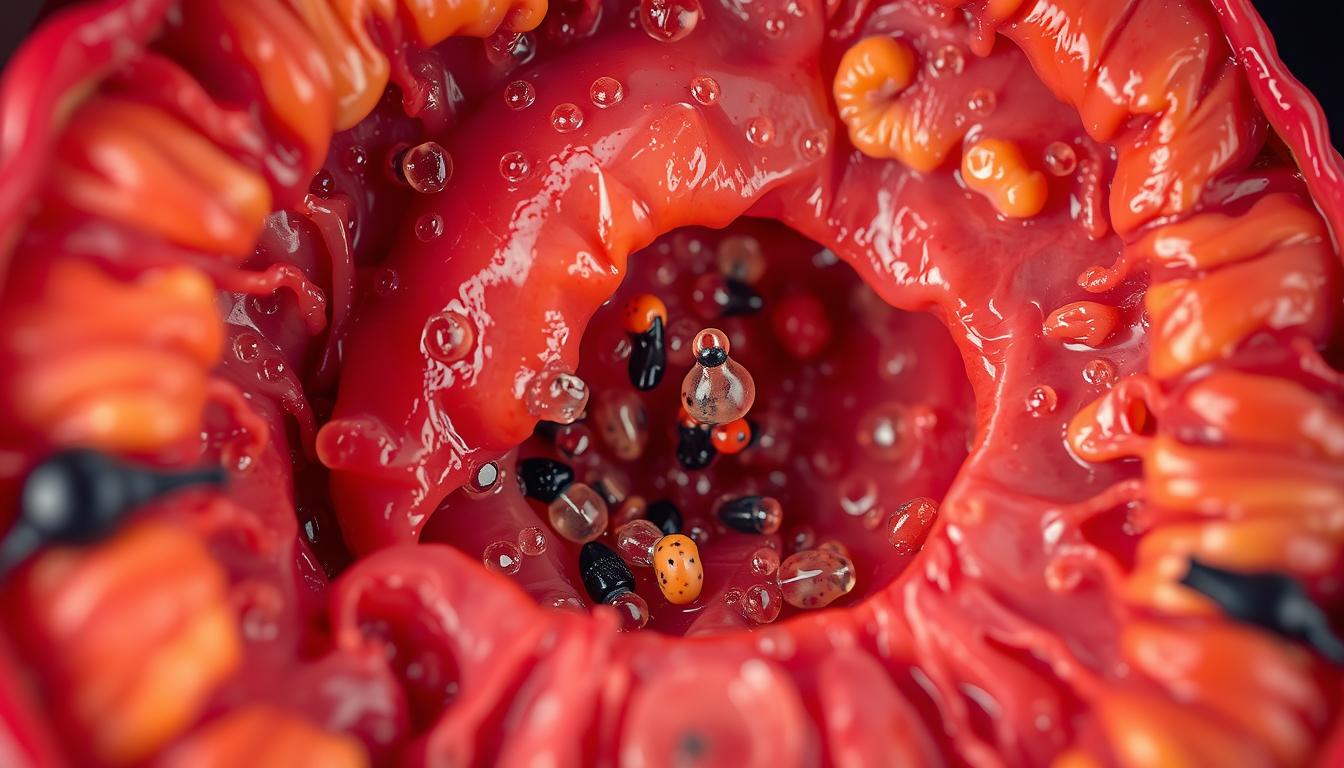Exploring nanoplastics reveals a surprising fact: polystyrene makes up about 7–10% of all plastic made globally1. A 2019 study found that people might eat up to 52,000 microplastic particles a year. Nanoplastics likely play a big part in this1. Learning about nanoplastics and how they affect our cells is key to understanding their health impact. The Bye Microplastics AI mobile app can help you reduce plastic use.
Nanoplastics are harmful pollutants that affect human health2. Research shows they can harm the heart, adding to cardiovascular risks2. The link between nanoplastics and cell death is complex. More research is needed to grasp how nanoplastics affect our health. This makes studying nanoplastics very important.
The Growing Threat of Nanoplastics in Our Environment
Understanding the impact of plastics on our environment is key. Nanoplastics play a big role, with nanoplastics implications on apoptosis being a major concern. They can affect cell death and potentially harm our health3. The world produces 464 million tons of plastic waste each year. Micro- and nanoplastic particles are found everywhere, including in human bodies3.
Nanoplastics come from many sources, including land and sea. Over 80% of microplastics are made on land, with only 20% coming from the ocean4. Scientists are working hard to study where these particles end up and how they affect us.
Research shows that microplastics can take a very long time to break down, sometimes thousands of years5. Scientists are studying how eating microplastics can harm our health. The Impact of nanoplastics on cell death is a big worry. It can cause our bodies to produce harmful substances, leading to diseases3.
| Environment | Microplastic Pollution |
|---|---|
| Seafood | 1.48 particles/g |
| Sugar | 0.44 particles/g |
| Honey | 0.10 particles/g |
| Salt | 0.11 particles/g |
| Alcohol | 32.27 particles/L |
| Bottled water | 94.37 particles/L |
| Tap water | 4.23 particles/L |
| Air | 9.80 particles/m³ |
Mechanisms of Nanoplastics and Cellular Apoptosis: Latest Research Findings
It’s important to understand how nanoplastics cause cells to die. Recent studies have shown the Nanoplastics toxicity on cellular apoptosis is a big deal. A study in Cambridge Prisms: Plastics6 found that microplastics and nanoplastics harm human health. They can mess with mitochondria and start apoptosis.
Research on polystyrene nanoplastics (PS-NPs) showed they affect human lung cells. PS-NPs can alter cell cycles and cause inflammation7. Another study found PS-NPs slow down cell growth and change cell shapes in A549 cells8. The Nanoplastics-induced cellular apoptosis involves many pathways, like the Bcl-2/Cleaved-caspase-2/Cleaved-caspase-3 pathway6.
Here are some key findings on how nanoplastics and cellular apoptosis work:
- PS-NPs can pass through the mouse placenta and cause too much cell death in human and mouse placental tissues6.
- Being exposed to PS-NPs raises oxidative stress and cell death in trophoblast cells6.
- Adding Bcl-2 can lower cell death in exposed trophoblast cells and help prevent miscarriages in mouse models6.
These discoveries show we need more research on nanoplastics and cell death. We also need ways to protect human health from these plastics.
How Nanoplastics Trigger Programmed Cell Death
Nanoplastics can enter cells and cause oxidative stress and mitochondrial dysfunction. These are key factors in triggering programmed cell death or apoptosis9. This complex process involves the interaction of nanoplastics with cellular components, leading to cellular apoptosis mechanisms in nanotoxicology. The role of nanoplastics in inducing programmed cell death is a significant concern for human health and the environment.
Research shows that nanoplastics can cause oxidative stress, leading to mitochondrial dysfunction and programmed cell death10. Their small size allows them to penetrate cells easily, causing more damage and increasing apoptosis risk. The toxic effects of nanoplastics include releasing harmful chemicals, acting as carriers, and causing physical damage through inhalation or ingestion9.
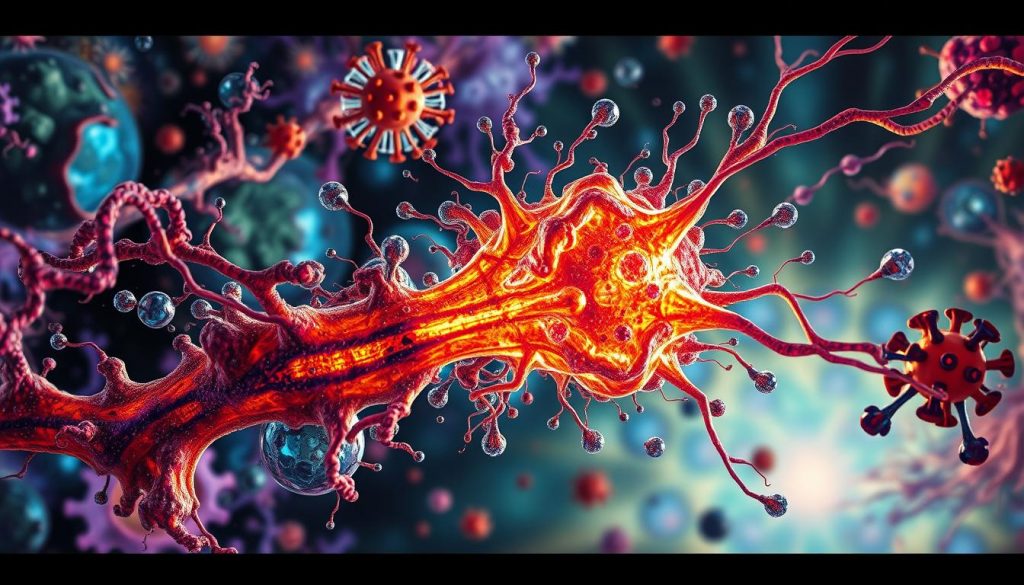
The mechanisms by which nanoplastics trigger programmed cell death are not fully understood. Yet, it’s clear they play a significant role in apoptosis. Understanding these mechanisms is vital for developing interventions to prevent or mitigate the harmful effects of nanoplastics. By studying the effects of nanoplastics on cellular apoptosis mechanisms in nanotoxicology, researchers can better understand the risks associated with nanoplastics and programmed cell death11.
Some key findings on the effects of nanoplastics on cellular apoptosis mechanisms include:
- Increased oxidative stress and mitochondrial dysfunction
- Release of toxic chemical components and physical damage
- Induction of programmed cell death or apoptosis
These findings emphasize the need for more research into the effects of nanoplastics on human health and the environment. This is critical, focusing on cellular apoptosis mechanisms in nanotoxicology and nanoplastics and programmed cell death.
Breakthrough Discoveries in Nanoplastics Research
Recent studies have made big strides in finding nanoplastics and understanding how they affect cells and the environment3. These findings are key to learning more about nanoplastics and their impact on health and nature. The world produces 464 million tons of plastic waste every year3, leading to more nanoplastics in our environment.
Studying how nanoplastics affect cells and how they regulate cell death is vital12. Research shows that tiny plastic particles are found in human tissues like the placenta, stool, lungs, and liver3. This can lead to health problems, including lung disease, cancer, and brain issues3.
The impact of nanoplastics on cells is complex. Some important discoveries include:
- Cells exposed to microplastics and nanoplastics show higher levels of inflammation3
- Cells experience more oxidative stress and damage to their energy-making parts13
- Cells can become older faster and their immune system weakens due to oxidative stress3
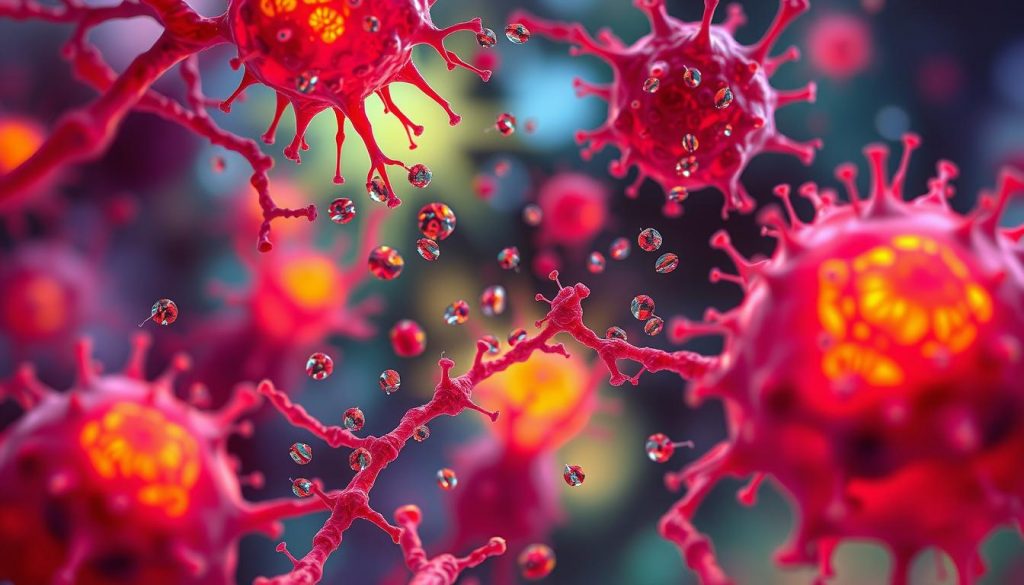
We need more research to fully grasp the effects of nanoplastics on health and the environment. But, what we know so far is concerning12. By studying nanoplastics further, we can find ways to reduce their harm and create a cleaner world.
Taking Action: Protecting Your Health Against Nanoplastic Exposure
Research shows a link between nanoplastics and cell death. It’s vital we act to protect our health14. Every year, over 400 million tons of plastic are made globally14. Sadly, 91% of plastic waste isn’t recycled14.
We must all take steps to fight the harm of nanoplastics. One key action is to use less plastic. Choose reusable items like glass or stainless steel instead of plastic ones14. Also, support efforts to reduce plastic pollution14.
Using apps like Bye Microplastics AI can help you learn about nanoplastics. It shows ways to lower your exposure.
Understanding nanoplastics and their effects on cells is complex15. But, we can tackle this problem together. By acting individually and as a group, we can make a difference. This way, we can protect our cells and the planet from nanoplastics.
FAQ
What are nanoplastics and how are they connected to cellular apoptosis?
What are the sources of nanoplastic contamination and the challenges in detecting them?
What are the latest research findings on the mechanisms of nanoplastics and cellular apoptosis?
How do nanoplastics trigger programmed cell death?
What are the latest breakthroughs in nanoplastics research?
Source Links
- Unmasking the Invisible Threat: Biological Impacts and Mechanisms of Polystyrene Nanoplastics on Cells
- Nanoplastics as emerging cardiovascular hazards: a narrative review of current evidence – The Egyptian Journal of Internal Medicine
- Molecular and Cellular Effects of Microplastics and Nanoplastics: Focus on Inflammation and Senescence
- Impact of Microplastics and Nanoplastics on Human Health
- Impacts of micro and nanoplastics on human health – Bulletin of the National Research Centre
- Exposure to high dose of polystyrene nanoplastics causes trophoblast cell apoptosis and induces miscarriage – Particle and Fibre Toxicology
- Frontiers | Polystyrene nanoplastics mediate oxidative stress, senescence, and apoptosis in a human alveolar epithelial cell line
- Toxic effects of polystyrene nanoplastics on MDA-MB-231 breast cancer and HFF-2 normal fibroblast cells: viability, cell death, cell cycle and antioxidant enzyme activity – Environmental Sciences Europe
- Research Progress on Micro(nano)plastic-Induced Programmed Cell Death Associated with Disease Risks
- Important Factors Affecting Induction of Cell Death, Oxidative Stress and DNA Damage by Nano- and Microplastic Particles In Vitro
- Molecular and Cellular Effects of Microplastics and Nanoplastics: Focus on Inflammation and Senescence
- Scientific Evidence about the Risks of Micro and Nanoplastics (MNPLs) to Human Health and Their Exposure Routes through the Environment
- Microplastic induces mitochondrial pathway mediated cellular apoptosis in mussel (Mytilus galloprovincialis) via inhibition of the AKT and ERK signaling pathway – Cell Death Discovery
- Health Implications of Widespread Micro- and Nanoplastic Exposure: Environmental Prevalence, Mechanisms, and Biological Impact on Humans
- The plastic brain: neurotoxicity of micro- and nanoplastics – Particle and Fibre Toxicology
